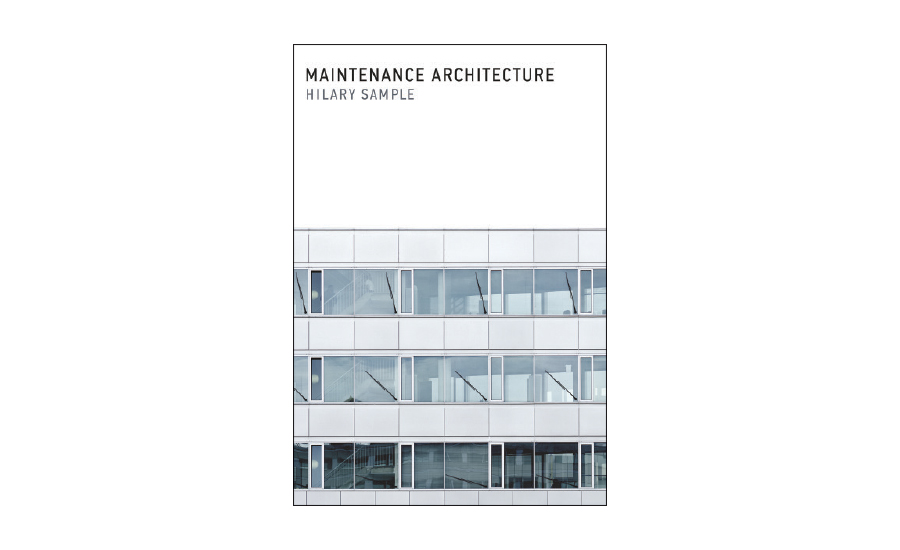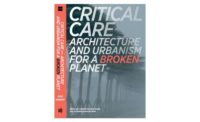Washing, dusting, scraping, patching, and other overlooked acts of upkeep triggered Hilary Sample to direct her attention toward a subject at once forgotten and self-evident. The general absence of building maintenance in architectural discourse prompted her to urge a reevaluation of “terms like cleaning and preservation” and their “far-reaching implications for the conception, construction, and endurance” of the constructed environment.
Sample, a partner and cofounder of New York– based MOS Architects, offers a smattering of short case studies and brief meditations on problems related to this practically invisible yet encompassing problem. Many examples are taken from contemporary artists, like Jeff Wall’s large- format photograph Morning Cleaning, which shows a custodian washing windows in Mies van der Rohe’s Barcelona Pavilion, evoking the labor and attention that act as an invisible support to the immaculate Modernist site. Elsewhere, short narratives extract moments of maintenance from within modern architectural history. For instance, she describes the development of cleaning strategies for skyscrapers, from the puny clips that washers took to strap themselves, one window at a time, to the Empire State Building, to the integrated exterior scaffold of Skidmore, Owing & Merrill (SOM)’s Lever House, whose cleanliness became a kind of architectural symbol for the soap brand itself.
Maintenance, here, is intended as part of a spectrum of operations from cleaning (more domestic and everyday) to preservation (the intention, often legally inscribed, of conserving a building in perpetuity). More than that, the nomenclature works as an alibi for Sample to examine the forgotten contributors to architectural history—not just the window washers and custodians, but the women architects whose names were written out, like SOM’s Natalie de Blois. Sample also includes Mierle Laderman Ukeles’s conceptual and performance art that for decades has highlighted the work of sanitation workers, custodians, and others who ceaselessly beat back the entropic forces that smear, clutter, and obscure the urban environment.
At its core, however, this book is about our ambiguous, perhaps inexplicable desire for order and cleanliness. What is it that motivates us to drive back the effects of time, gravity, or nature on our pristine constructions? While Sample provides no single answer to this, she clearly outlines the complex stakes of the question. Washing away the accretions of time tends to also cleanse buildings of evidence of the social, political, and economic structures that sustain their existence. Maintenance in these terms is another word for power, when you consider who performs the work and who receives the benefit.
Equally interesting is something missing: Sample’s own work. We often expect architects’ treatises, stretching back to Andrea Palladio, to be illustrated with their authors’ designs. While its short, punchy texts and compelling images mark the book as the work of an architect, this is no straightforward manifesto. It could, however, have an effect on design, if others consider Sample’s timely meditations that underscore the ethical, political, and social entanglements standing behind the spotless image of architecture.




Post a comment to this article
Report Abusive Comment